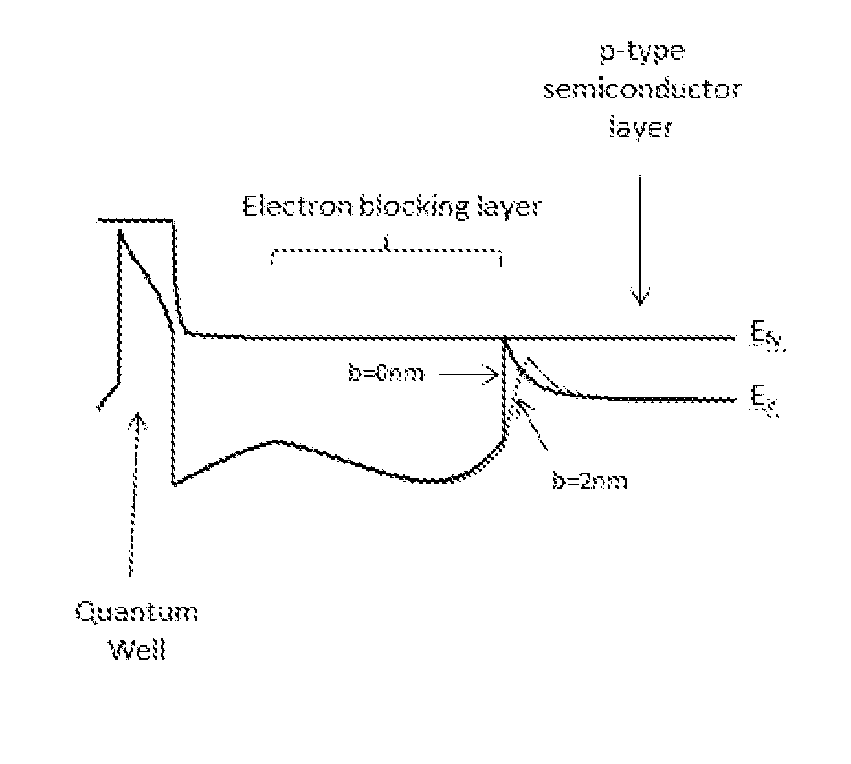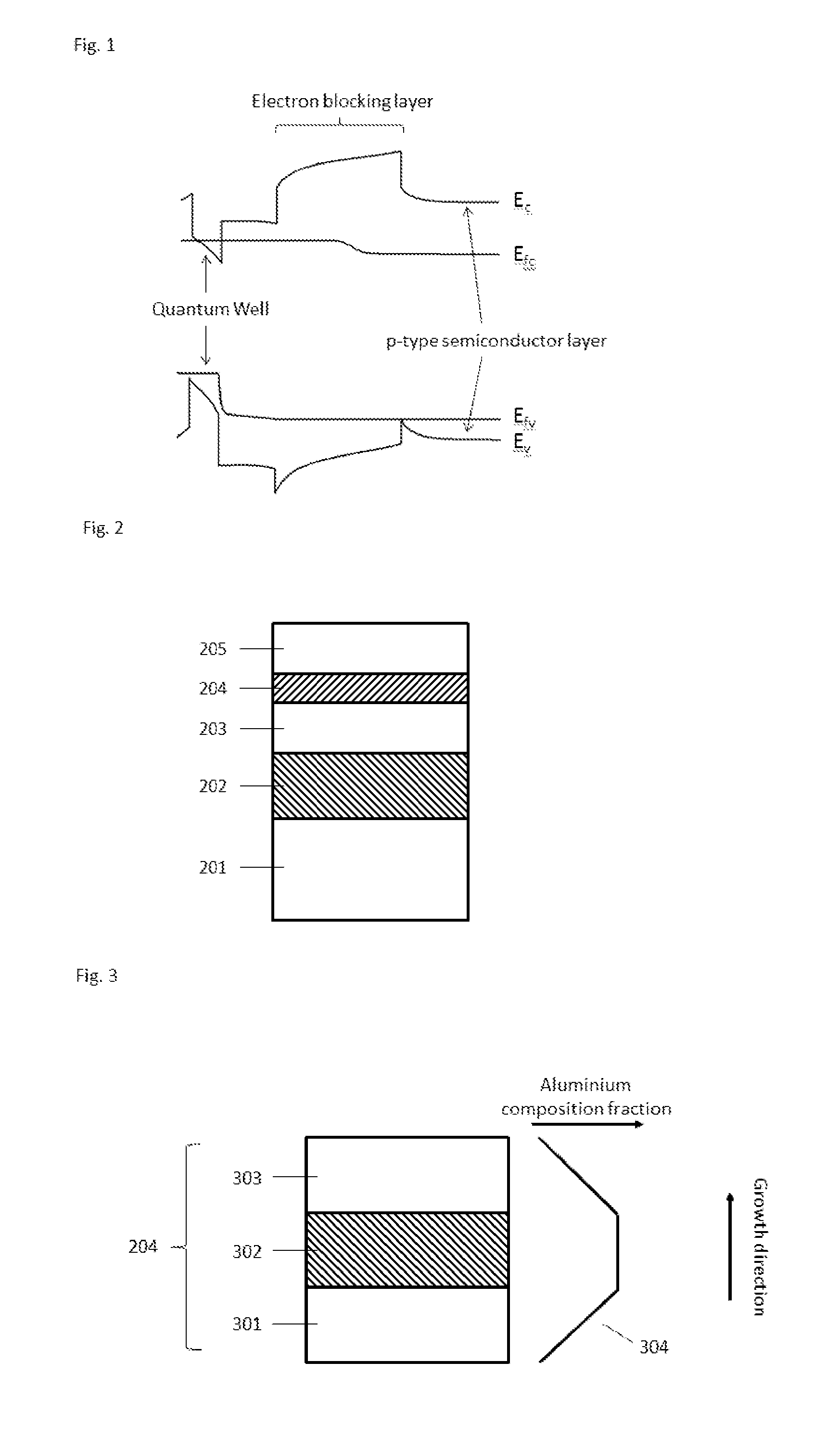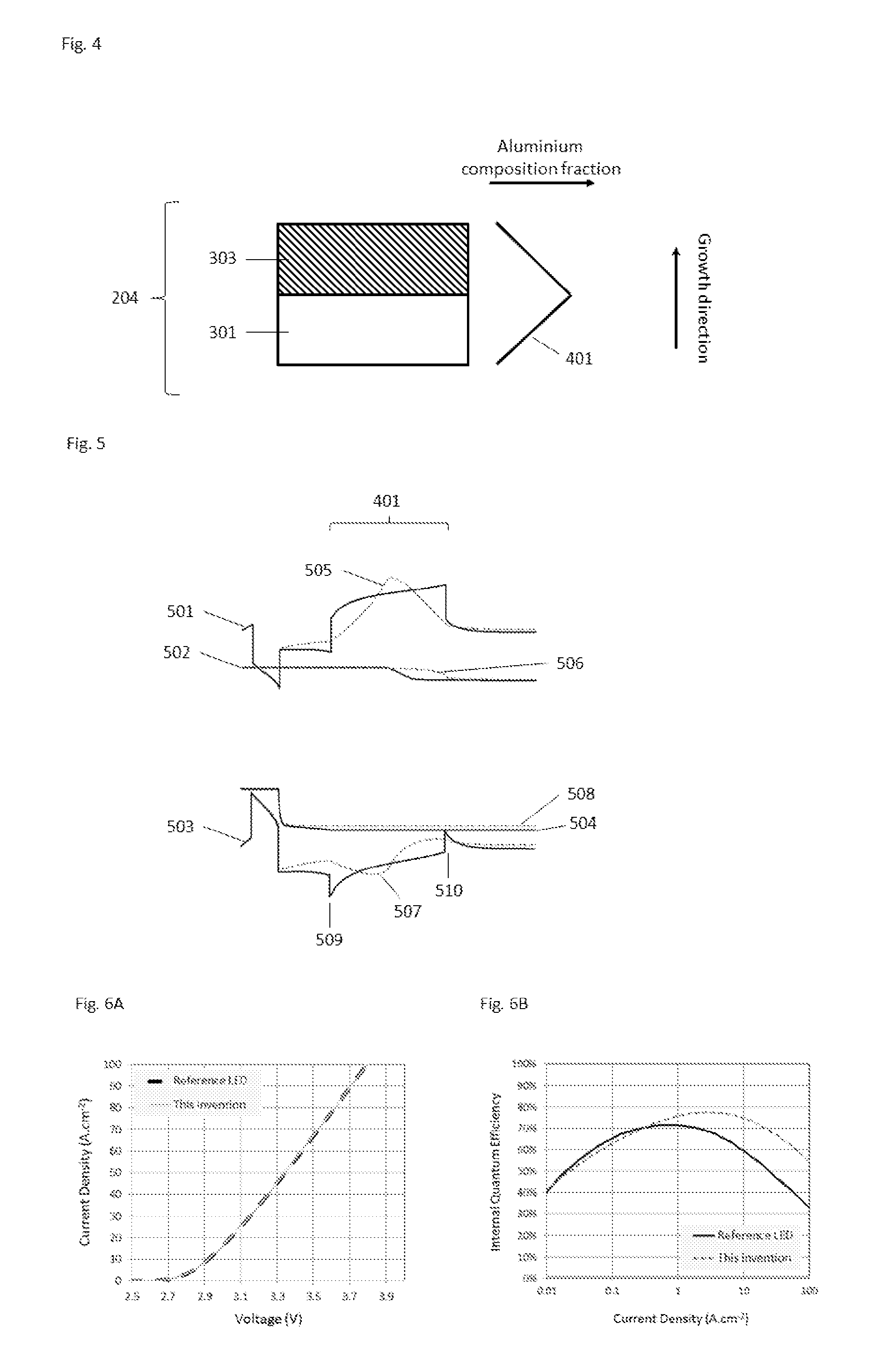Nitride LED structure with double graded electron blocking layer
a technology of electron blocking layer and led structure, which is applied in the direction of basic electric elements, semiconductor devices, electrical equipment, etc., can solve the problems of low efficiency, low efficiency, and low efficiency, and achieve high efficiency, reduced electron leakage, and high aluminium composition
- Summary
- Abstract
- Description
- Claims
- Application Information
AI Technical Summary
Benefits of technology
Problems solved by technology
Method used
Image
Examples
first embodiment
[0036]An example of an electron blocking region 204 with 3 layers according to this invention is represented in FIG. 3, and may contain: a upgraded layer 301, a middle layer 302 disposed on the upgraded layer 301 and a downgraded layer 303 disposed on top of the middle layer 302. Because of the existence of the middle layer 302, the maximum aluminium composition of the electron blocking region under mass production is stabilized.
[0037]In this example, the three layers 301, 302 and 303 of the electron blocking region 204 include, but are not limited to, AlxInyGa1-x-yN wherein 0301, 302 and 303 of the electron blocking region 204 have all the same thickness. However, the three layers 301, 302 and 303 may have different thicknesses.
[0038]The composition of each of the layers of the electron blocking region 204 will be described according to the first embodiment of this invention, with reference to FIG. 3 and to the aluminium composition profile 304 of FIG. 3.
[0039]The upgraded layer 30...
second embodiment
[0044]Such composition profile in each of the layers of the electron blocking region 204 has an effect on the conduction band and valence band profile. FIG. 5 is comparing the simulation results from a reference LED structure which is similar to FIG. 2, wherein the electron blocking region 204 is made of a single layer of AlxGa1-xN, to an LED structure having an electron blocking layer as described in this second embodiment and illustrated in FIG. 4. In this example, the aluminium composition fraction of the electron blocking region of the reference LED is constant at 0.22 and the thickness of the electron blocking region is 18 nm. Also in this example, but not limiting the scope of this invention, the aluminium composition fraction of the upgraded layer 301 of the electron blocking region 204 of the LED related to this invention is linearly graded from 0 to 0.3, and the aluminium composition fraction of the downgraded layer 303 of the electron blocking region is linearly graded fro...
third embodiment
[0063]In the present invention, and as illustrated in FIG. 11 and FIG. 12, the aluminium composition profile of the upgraded 301 and downgraded 303 layers of the electron blocking region 204 can be non-linear. More specifically the gradient of aluminium composition of the upgraded layer 301 and / or the downgraded layer is larger as the aluminium composition increases. The gradient shape can be exponential, logarithmic or polynominal. This structure has an advantage that the low-crystal quality high Al composition region can be smaller.
PUM
 Login to View More
Login to View More Abstract
Description
Claims
Application Information
 Login to View More
Login to View More - R&D
- Intellectual Property
- Life Sciences
- Materials
- Tech Scout
- Unparalleled Data Quality
- Higher Quality Content
- 60% Fewer Hallucinations
Browse by: Latest US Patents, China's latest patents, Technical Efficacy Thesaurus, Application Domain, Technology Topic, Popular Technical Reports.
© 2025 PatSnap. All rights reserved.Legal|Privacy policy|Modern Slavery Act Transparency Statement|Sitemap|About US| Contact US: help@patsnap.com



